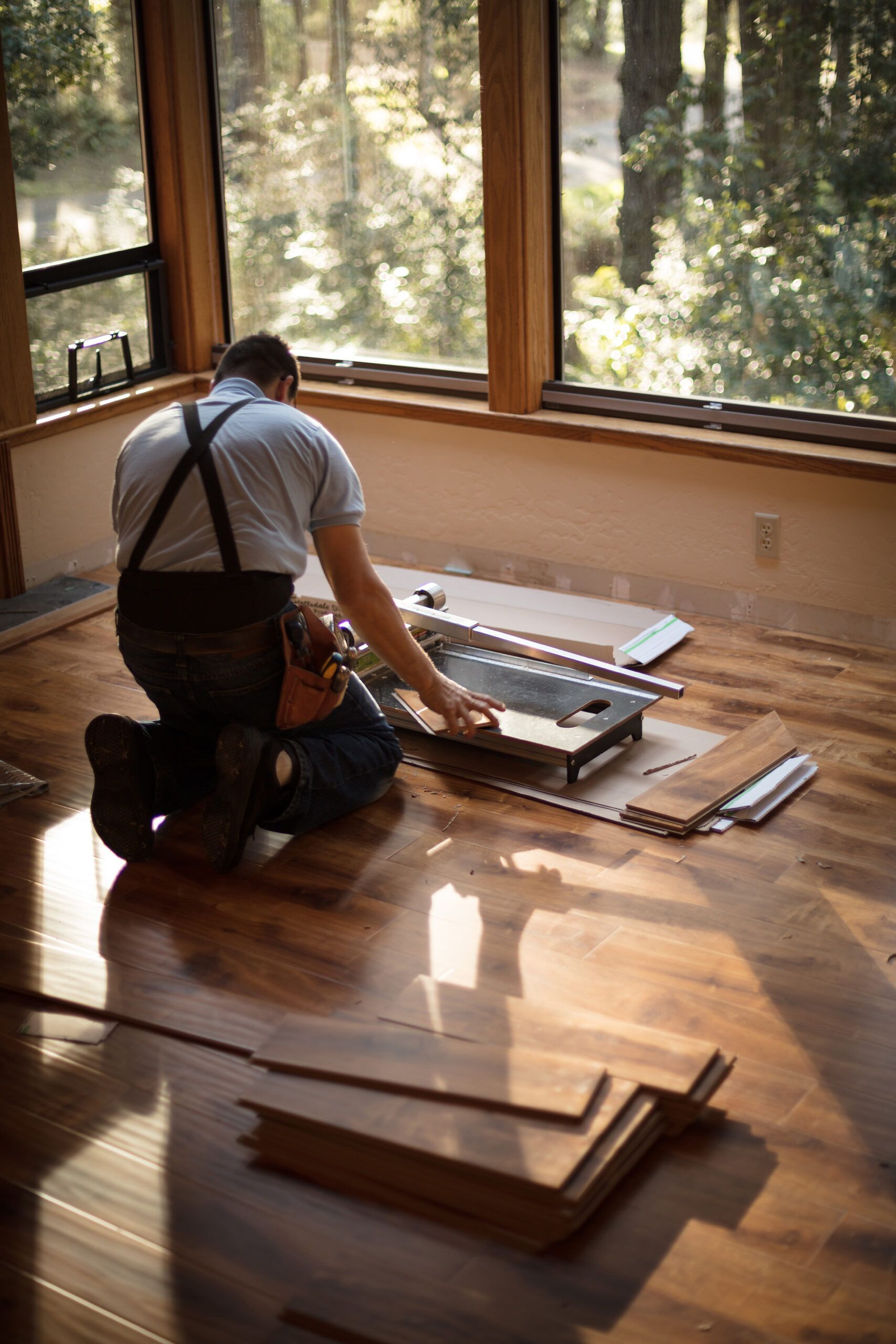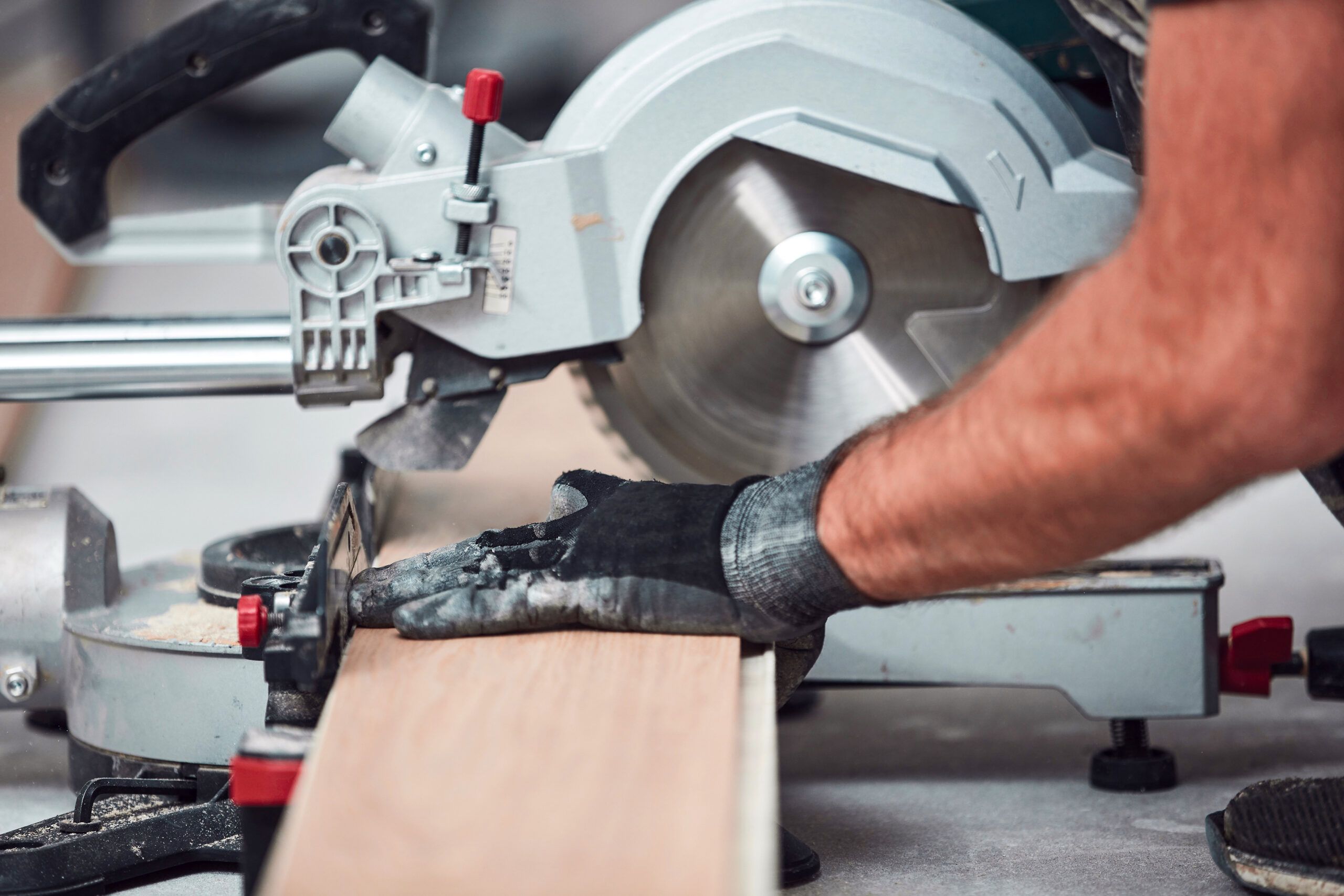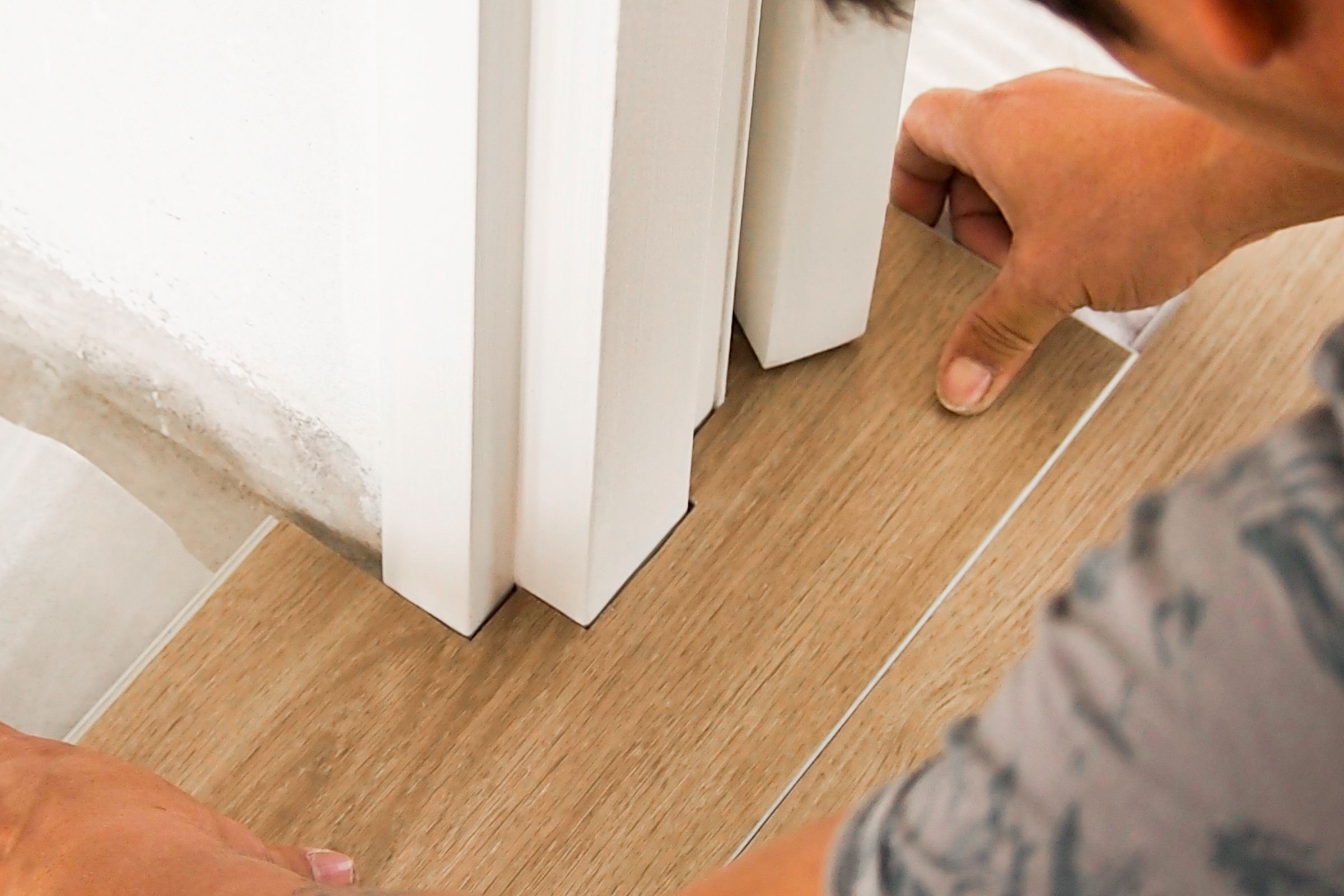Laminate flooring can be an economical way to get the look of hardwood, plus it’s easy to install. But it’s not always easy to cut. High-speed saws with the wrong blades installed can often chip the surface as they cut. It takes the right techniques and tools to get the job done. The following are some of the best ways to cut laminate flooring using different methods so you can choose the right one for your project.
Installing laminate flooring is a relatively easy job, but, chances are, you’re going to have to have to trim some of the boards to fit your room perfectly. There are several different ways to go about cutting laminate flooring. And the best tools to reach for depend on the type of cut required. The following sections will explain how to cut laminate flooring and which types of cuts they’re best suited for. Before you get started, make sure to wear safety goggles, gloves, and a dust mask and always take precautions to work slowly and carefully, ensuring to keep hands away from the blade and the cutting line.

How To Cut Laminate Floor with a Laminate Flooring Cutter
Best for: Short straight cuts and short angles
A laminate flooring cutter is specially designed for cutting flooring, so not only is it effective, but it causes no chipping and it’s very easy to use, It is essentially a knife that drops straight through the laminate, similar to how a paper cutter works. However, it can only handle short cuts, so you’ll still need another tool to rip planks to width. If you don’t want to purchase one just for your project, you may be able to rent one from a home improvement center.
- Mark the laminate board to length.
- Lift the handle on the laminate cutter to raise the blade.
- Place the laminate board on the laminate cutter and position the cut line under the blade.
- Ensure that everything else is clear from the laminate cutter (hands, fingers, clothing, tools, etc.)
- Firmly press down on the handle to cut the laminate.
How To Cut Laminate Flooring with a Miter Saw

Best for: Short crosscuts (cut across the grain widthwise) and short angle cuts
A miter saw is an excellent tool for cutting laminate flooring. To ensure there’s no choipping, prep the board with painter’s tip before cutting.
- Install a sharp fine-tooth blade with a high TPI (80 to 100 teeth per inch) in the miter saw.
- Mark the cut and angle on the laminate flooring. Be sure to mark at the very edges of the laminate flooring.
- Adhere a piece of painter’s tape across the marked cutting line and re-draw the cut line across the painter’s tape.
- Position the flooring up against the miter saw’s fence. Adjust the miter saw to the correct angle for the blade to meet the marked cutting line. Clamp the board in place.
- Safely start the miter saw and allow the blade to get up to full speed.
- Carefully lower the blade into the surface of the laminate flooring to cut it to length.
Once the blade has fully stopped, remove the board, peel off the tape, and inspect the cut.
How To Cut Laminate Flooring with a Circular Saw
Best for: Long, angled cuts and ripping boards to width (cut along the grain lengthwise)
A circular saw is a tool many DIYers already own so it can be convenient for cutting flooring. It can also chip the laminate if you’re not careful. Here’s how to avoid that:
- Install a carbide-tipped blade with a high TPI (60 to 80 teeth per inch) in the circular saw.
- Mark the backside of the board at the cut location.
- Adhere a piece of painter’s tape across the marked cutting line and re-draw the cut line across the painter’s tape.
- Turn the board over and transfer the cut mark to the backside of the laminate board.
- Clamp the laminate board to a worktable, bench or pair of sawhorses so that the saw will not cut through the work surface.
- Adjust the saw depth to a little more than the thickness of the laminate plank.
- Place the saw on the edge of the cut line, pull it back slightly, and start the saw.
- Slowly push the saw through the laminate board until it’s cut.
- Unclamp the board, turn it over, remove the tape, and inspect the edge.
How To Cut Laminate Flooring with a Table Saw
Best for: Ripping boards to width
When it comes to ripping laminate boards to width, the table saw is the handiest tool. It’s the least likely to chip the boards on these cuts. Make sure to use a carbide-tipped blade with a high TPI for minimal splintering.
- Mark the board for the cut.
- Place the board on the table saw and adjust the fence to the correct width.
- Remove the board and start the saw, allowing the blade to get up to speed.
- Carefully place the laminate board against the fence and slowly pass it through the table saw blade.
- Use a push stick to push the board all the way through the blade safely.
How To Cut Laminate Flooring with a Jigsaw
Best for: Curved cuts and notches
If you have a curved cut to make, such as around a toilet, a pole, or another obstacle, a jigsaw is the tool for the job. But, again, this method requires the right blade—carbide-tipped is best—and some prep work. To get the proper proportions of the curve, it’s helpful to try to create a template of the shape you need to cut on paper first, then trace it onto the laminate board.
- Trace the shape you need to cut on a piece of paper.
- Place several strips of painter’s tape across the surface of the laminate board where the cut marks will go, then trace the template onto the tape.
- Clamp the laminate board to a stable surface with the cut line as close to the edge as possible but leaving enough room to avoid cutting the bench or worktable.
- Install a down-cutting blade with a tpi of about 14 in the jigsaw.
- Place the shoe of the jigsaw on the laminate so that the blade is in line with the cut.
- Pull the saw back slightly and start the saw.
- Slowly pass the jigsaw through the laminate board, supporting the edge hanging off the work surface with the other hand.
How To Cut Laminate Flooring with a Handsaw
Best for: Short crosscuts and short angle cuts
Cutting laminate flooring with a handsaw isn’t the most efficient, but it can be done. Note that it’s important to use a fine finish saw, with at least 15 TPI (teeth per inch)—more teeth on the blade will give you a cleaner cut. A crosscut saw will inevitably cause chipping. Take care and use a light touch as you follow these steps:
- Mark the cut and/or angle on the plank of laminate flooring using a pencil.
- Place the plank of laminate on a stable, flat worktable or bench, making sure the cut line mark is overhanging beyond the edge of the work surface. Clamp the plank in place to the work surface.
- Position the handsaw blade on the far edge of the plank at the cut mark. Holding the saw at a shallow angle, while you steady the opposite side of the board on the work surface, start sawing with short, light strokes just until the saw begins to cut a groove.
- Position the blade within the groove at a downward angle. Using longer strokes (but maintaining light pressure), continue cutting through the board.
- Once you’ve cut about halfway through the board, support the material with your free hand to prevent the board from snapping.
- Continue cutting with light pressure until the board is cut.
How To Cut Laminate Flooring without a Saw
Best for: Short crosscuts and short angle cuts
Believe it or not, it’s possible to cut laminate without a saw at all, though admittedly, it can be time-consuming if you have a bunch of boards that need cutting. But for a just a few, it can work in a pinch. All you need is a utility knife with a sharp blade, a straight edge tool, and the edge of a table.
- Mark the cut line on the laminate board.
- Place the board on a worktable.
- Position a straight edge tool along the cut line.
- Using light pressure, score the surface of the laminate flooring with the utility knife, using the straight edge as a guide.
- Make subsequent passes with the knife using increasing pressure.
- Place the cut line just off the edge of the worktable and press down to snap the board to length.
Careful Cutting
When learning how to cut laminate wood flooring, meticulous measuring and being extra careful while cutting is the key. Apply painter’s tape beforehand to avoid chipping, and turn the board facedown when necessary. With these tips, you’ll be able to make excellent, clean cuts that look professional and add to the beauty of your new floor.

